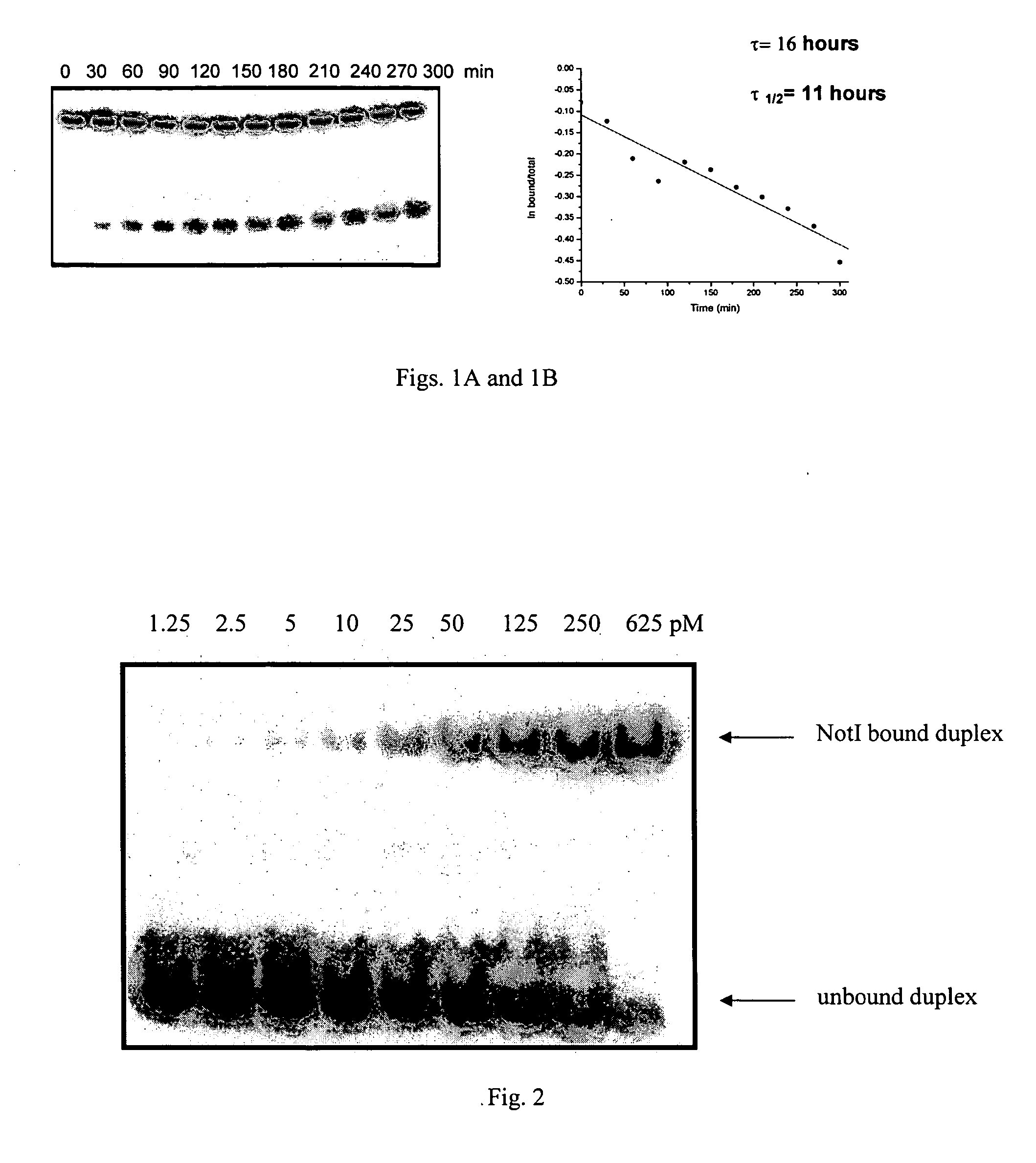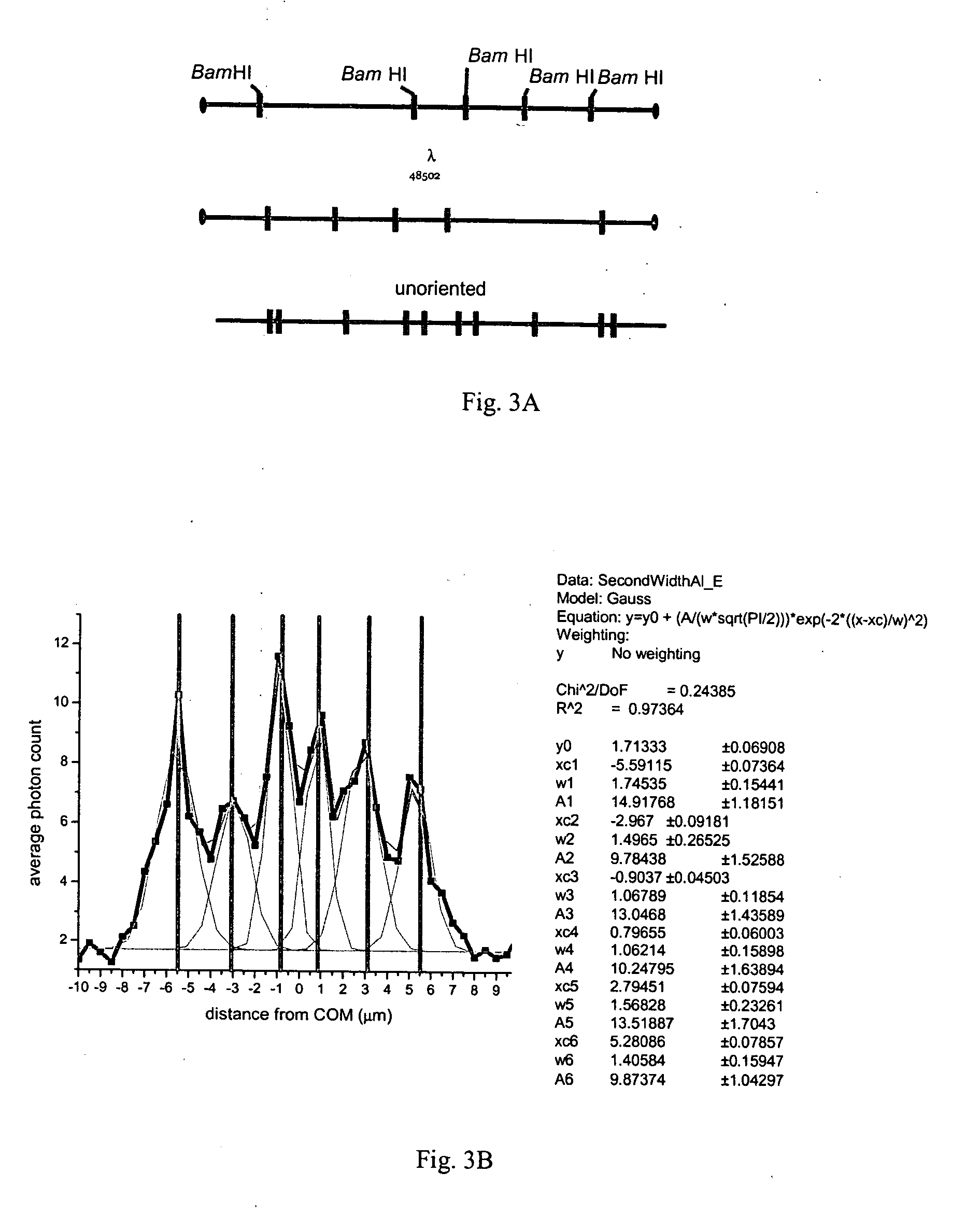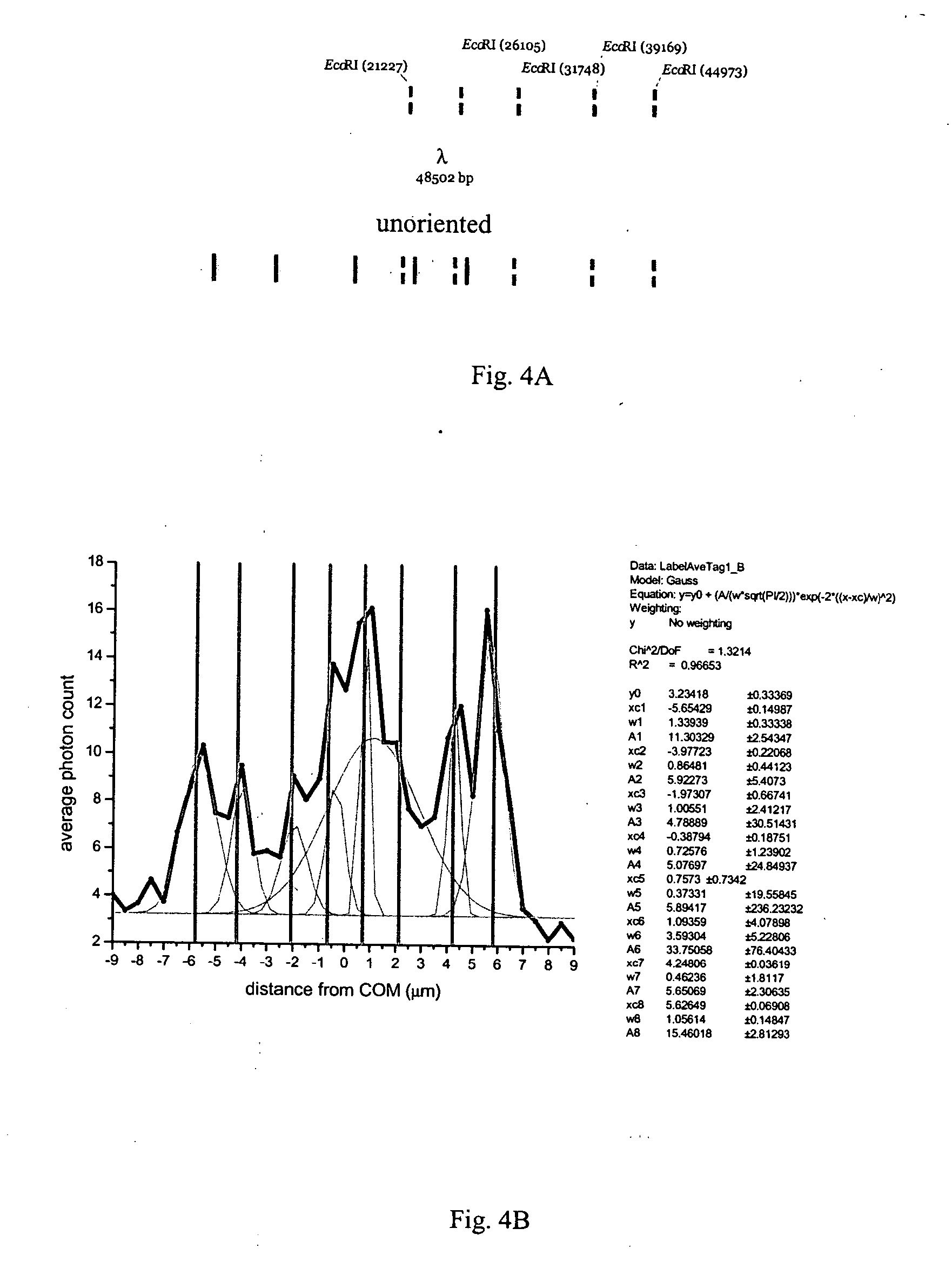Methods and compositions related to the use of sequence-specific endonucleases for analyzing nucleic acids under non-cleaving conditions
a technology of endonucleases and nucleic acids, applied in the field of use of sequence-specific endonucleases for analyzing nucleic acids under non-cleaving conditions, can solve problems such as subject of an exhaustive amount of research
- Summary
- Abstract
- Description
- Claims
- Application Information
AI Technical Summary
Benefits of technology
Problems solved by technology
Method used
Image
Examples
example 1
[0100]100 pM of a radiolabeled DNA duplex containing a single BamHI recognition sequence was incubated with 2 nM BamHI in the presence of 5 mM CaCl2. At the indicated time points a 6000-fold molar excess of unlabeled specific competitor DNA was added. Least squares analysis of complex dissociation data suggests the half-life of the complex is approximately 39,600 minutes.
example 2
[0101] The equilibrium binding of the NotI, PmeI and EagI restriction endonucleases in the presence of calcium was investigated. Preliminary data indicate these endonucleases bind to their target recognition site tightly in the presence of calcium with no appreciable cut-through activity observed (see FIG. 2). Thus the inclusion of calcium in a restriction endonuclease reaction may be a general method to stimulate tight complex formation while inhibiting cleavage.
example 3
[0102] As shown in FIG. 3A lambda DNA has five BamHI binding sites. The positions of the tag locations expected on a population of stretched but unoriented lambda DNA molecules is shown on the bottom molecule. The blue oval represents the “head” of the lambda DNA molecule, while the purple oval represents the tail. Since molecules are not oriented prior to analysis, they are able to enter the detection spot in either a “head-first” or “tail-first” orientation.
[0103]FIG. 3B shows the label average from lambda DNA bound by Alexa 546 BamHI. The label average sums the photon counts along the DNA backbone of those DNA molecules selected for analysis. The peaks represent positions, in micrometers from the center of mass (COM), along the lambda DNA backbone where increased photon emission is observed. These molecules are unoriented prior to analysis and thus expected to enter the detection spot in both “head-first” and “tail-first” orientations. Expected BamHI tag locations, as indicated ...
PUM
| Property | Measurement | Unit |
|---|---|---|
| Concentration | aaaaa | aaaaa |
Abstract
Description
Claims
Application Information
 Login to View More
Login to View More - R&D
- Intellectual Property
- Life Sciences
- Materials
- Tech Scout
- Unparalleled Data Quality
- Higher Quality Content
- 60% Fewer Hallucinations
Browse by: Latest US Patents, China's latest patents, Technical Efficacy Thesaurus, Application Domain, Technology Topic, Popular Technical Reports.
© 2025 PatSnap. All rights reserved.Legal|Privacy policy|Modern Slavery Act Transparency Statement|Sitemap|About US| Contact US: help@patsnap.com



